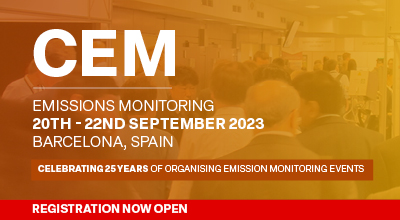| Abstract Title: | Intercomparison of different cascade impactors for fine and ultrafine particle sampling in two steel plants |
| Presenter Name: | Mr Iñaki Mugica |
| Co-authors: | Dr Estibaliz García-Ruiz Mr Alfredo Perez-Guinea Dr Jose Antonio García-Fernández |
| Company/Organisation: | SUMA Environmental Solutions |
| Country: | Spain |
Abstract Information :
In response to the severe air pollution situation, more stringent regulations on pollutant emissions are being promulgated. These measures have promoted improvements in flue-gas filtration and depuration systems of the main productive industries, which has led to an important decrease in dust emissions. This drop is a challenge from the point of view of measurement technologies and has shown certain shortcomings in the methodologies proposed from the current regulations. The demand for measuring ever lower concentrations requires ever more rigorous and refined laboratory and measurement protocols. Numerous studies have made clear the importance of studying particle size distributions (PSD) and the physical-chemical characterization of the size-segregated particulate matter (PM), due to its role in characterizing sources and relating to its effect on health and the environment (Sánchez de la Campa et al., 2011; Lin Sheng-Lun, 2022; ElbI Patrik et al., 2022; Liu Hexin et al., 2019; González-Castanedo Y. et al., 2014; Laaongnaun S. et al., 202). In this study several different models of cascade inertial impactor were subject to a field intercomparison experiment in accordance with the reference standards (EN ISO 23210:2010). The purpose of it was three-fold: 1) to assess the performance of several commercial models of cascade impactors regarding the particle mass size distribution under real operating conditions, 2) to develop a methodology that optimizes the collection of mass at each stage and the reliability of the measurement, especially at low concentration emissions, through the use of different materials and preparation conditions for the substrates, and 3) to characterise aerosol size distributions including ultrafine particles using impactors. The present study has been carried out in two characteristic emission sources: an integrated steel mill and an electric arc steel mill. In the first case, with PM emission concentrations lower than 1 mg·m-3 (0ºC, 1 atm). The sampling times was established considering that the collected mass in each stage is large enough to permit weighing and subsequent chemical analysis, but without overloading the deposition substrates. The cut-off particle size (D50%) of each impactor stage have been recalculated after sampling (it was done based on the real flow used in sampling and the temperature of the emission). Four different models of cascade impactor were used in the intercomparison: (i) KALMAN KS-220 (Kálmán System Ltd. 3 stage: 10, 2.5 and 1 µm), (ii) MARK III (Pilat Mark III. 8 stage: 0.24 to 23 µm), (iii) DEKATI PM10 (Dekati Ltd. 3 stage: 10, 2.5 and 1 µm) and (iv) BLPI (Berner low-pressure impactor; 11 stage: approx. 0.01 to 16 μm) The results regarding mass size distributions show a good correlation between all compared devices in both experimental campaigns. The impactors were in the range average +/-1,0%, +/-9,5% and +/-25% for PM1 at very low concentrations, sampling at representative points but not strictly at the same points of the sampling section. Regarding the methodological aspects of the research we wish to highlight the importance of: 1) setting a proper conditioning time in the desiccator for the substrates of any material, and of prior calcination the quartz ones, to obtain stable and reliable weights; 2) the use of grease uniformly and properly applied on the surface of the smooth substrates to avoid rebounds; and 3) an adequate choice of the material of the substrates (and the way in which they are obtained) to guarantee the quality and validity of subsequent analysis.

